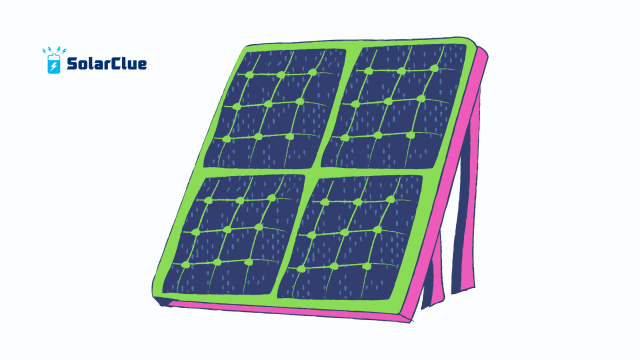Off-Grid Solar System Setup Made Easy
Access to electricity shouldn’t be a luxury. For homes in remote areas or those seeking energy independence, an off-grid solar system offers a powerful solution. It enables households to generate, store, and use their own electricity without relying on the grid. In this complete guide, we’ll walk you through the key components, installation process, pricing, and tips to get your off-grid solar system up and running with ease.
Table of Contents
- 1 What Is an Off-Grid Solar System?
- 2 Key Benefits of an Off-Grid Solar System
- 3 Main Components of an Off-Grid Solar System
- 4 Choosing the Right System Size
- 5 Best Off-Grid Solar Panels in India
- 6 Installation Tips for Maximum Efficiency
- 7 Pricing Guide for Off-Grid Solar Systems (2025)
- 8 Government Schemes and Support
- 9 Maintenance Checklist
- 10 Real-Life Example
- 11 Common Myths
- 12 Expert Buying Tips
- 13 FAQs
What Is an Off-Grid Solar System?
An off-grid solar system is a stand-alone power system that generates and stores electricity independently of the public grid. Unlike on-grid systems, it doesn’t export electricity back to the utility. Instead, it uses off-grid solar panels, batteries, and inverters to keep your appliances running 24/7.
This setup is especially beneficial in rural regions, remote farms, hill stations, and disaster-prone areas where power outages are frequent. With rising solar power system efficiency and dropping costs, it’s now more feasible than ever.
Key Benefits of an Off-Grid Solar System
- 100% Energy Independence: Free yourself from unpredictable power cuts.
- No Monthly Bills: Once installed, enjoy zero electricity costs.
- Eco-Friendly: Reduce your carbon footprint with sustainable power.
- Reliable in Remote Areas: Perfect for locations without grid access.
Main Components of an Off-Grid Solar System
To build a functional off-grid solar system, you’ll need the following:
1. Off-Grid Solar Panels
These are high-efficiency solar panels designed to charge batteries. Choose monocrystalline for maximum performance.
2. Solar Inverter
Converts DC from the panels to AC for your appliances.
3. Battery Bank
Stores power for use during nights or cloudy days. Lithium-ion batteries are preferred for their lifespan and efficiency.
4. Charge Controller
Manages power from off-grid solar panels to prevent battery overcharging or damage.
5. Mounting Structures
Durable frames that position your panels for optimal sunlight.
Choosing the Right System Size
System size depends on your daily energy consumption:
| Load Type | System Size |
|---|---|
| Basic Lighting, Fan | 1–2 kW |
| Lighting + TV + Fridge | 3–4 kW |
| Full Home Setup | 5 kW+ |
For example, a 3BHK house typically needs a 4–5 kW off-grid solar system for uninterrupted supply.
Best Off-Grid Solar Panels in India

Loom Solar Mono Panel 370W
- Excellent low-light performance and compact size.
Vikram Solar Polycrystalline Panel
- Affordable and durable with reliable output.
Waaree WS-300
- Great for hot climates with high efficiency.
Luminous Mono Perc 440W
- High wattage, perfect for limited space roofs.
Installation Tips for Maximum Efficiency
- Install panels facing south at a 15–30° tilt.
- Keep panels free from shade, dust, or debris.
- Use MPPT (Maximum Power Point Tracking) controllers.
- Ensure battery room has proper ventilation.
- Protect inverter and battery units from rain and heat.
Pricing Guide for Off-Grid Solar Systems (2025)
| Capacity | Price Range (INR) |
| 1 kW | ₹75,000–₹1,10,000 |
| 3 kW | ₹1,80,000–₹2,50,000 |
| 5 kW | ₹2,80,000–₹4,00,000 |
Prices vary based on panel type, battery capacity, and inverter technology. Look for subsidy options or easy EMI plans.
Government Schemes and Support
While most subsidies cater to on-grid systems, some state-level schemes also cover off-grid solar systems:
- PM-KUSUM: For farmers needing solar pumps.
- Saubhagya Scheme: Promotes rural electrification via off-grid solutions.
- CSR Programs: Many NGOs install off-grid solar setups in remote schools, clinics, and homes.
Maintenance Checklist
- Monthly cleaning of off-grid solar panels.
- Battery water levels (if using lead-acid).
- Inverter health check every 6 months.
- Annual professional inspection.
Real-Life Example
In Uttarakhand, a remote school in Pauri Garhwal faced daily power shortages. A 5kW off-grid solar system transformed the experience. Now, classrooms are powered, internet is functional, and e-learning is a reality. Parents are even more eager to send their children.
Common Myths
Myth 1: It’s too expensive.
Truth: It’s a one-time investment with lifetime savings.
Myth 2: Solar doesn’t work in cold regions.
Truth: Panels work more efficiently in cold weather with sunlight.
Myth 3: Maintenance is high.
Truth: Just regular cleaning and battery checks are needed.
Expert Buying Tips
- Get an energy audit done before choosing capacity.
- Prefer lithium-ion over lead-acid batteries.
- Use mobile apps to monitor power generation.
- Always ask for warranty—25 years for panels, 5+ years for batteries.
- Go for MNRE-approved installers and branded components.
FAQs
1. Can I run an AC on off-grid solar?
Yes, if the system is large enough to handle the load.
2. How many hours will a battery last?
Depends on usage and battery size. A 150Ah battery can last 4–5 hours.
3. What is the lifespan of an off-grid system?
25–30 years for panels, 7–10 years for batteries.
4. Can I expand the system later?
Yes, most systems are scalable.
5. Do I need DISCOM approval?
No. Since it’s not connected to the grid, no utility approval is required.
Installing an off-grid solar system is more than a power solution—it’s a lifestyle upgrade. Whether you’re living off the grid by choice or by necessity, a properly designed off-grid solar panel system ensures reliability, peace of mind, and environmental care. Want to explore off-grid options tailor-made for your needs? Visit solarclue.com today or read more real-life stories and expert tips at blog.solarclue.com—your energy freedom begins here.




